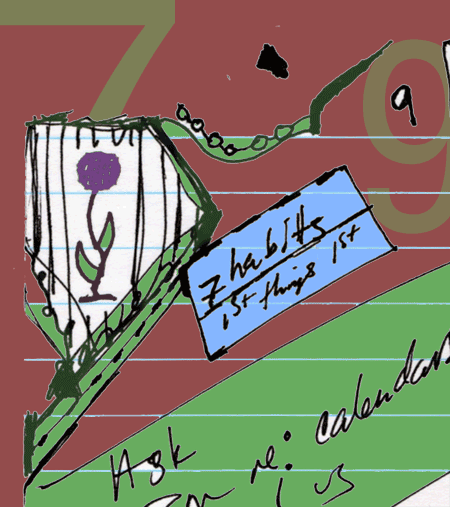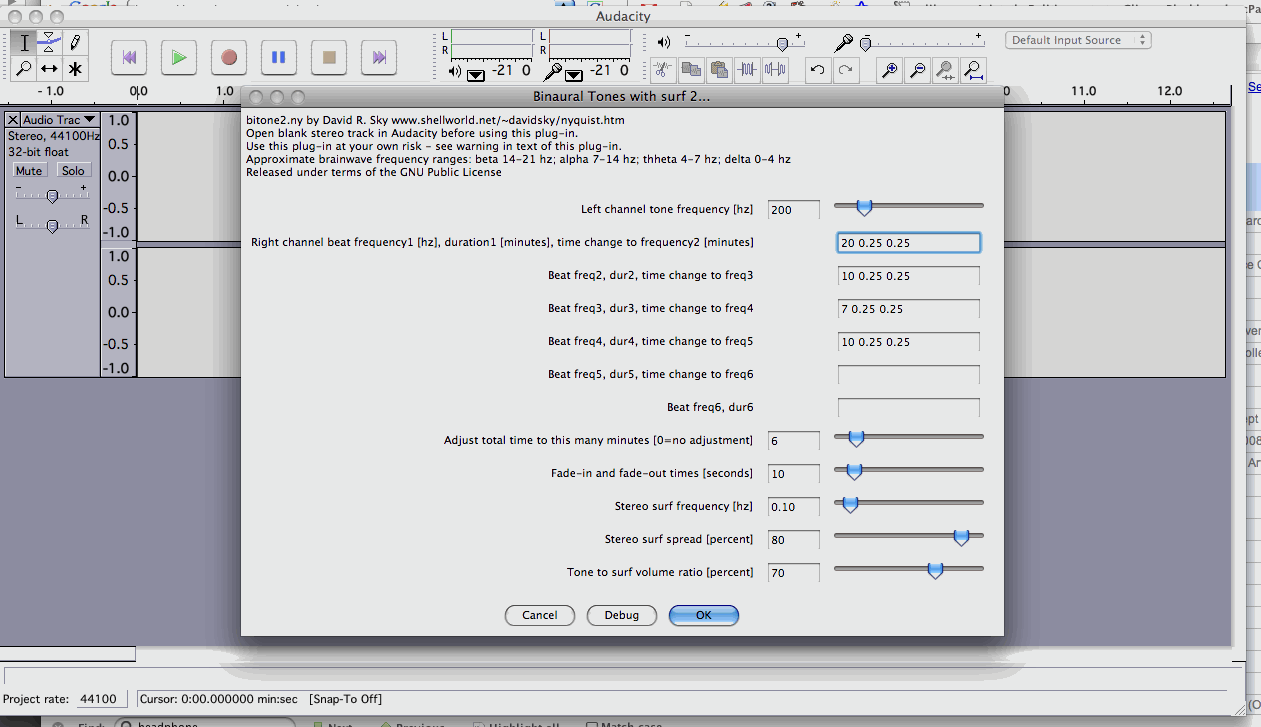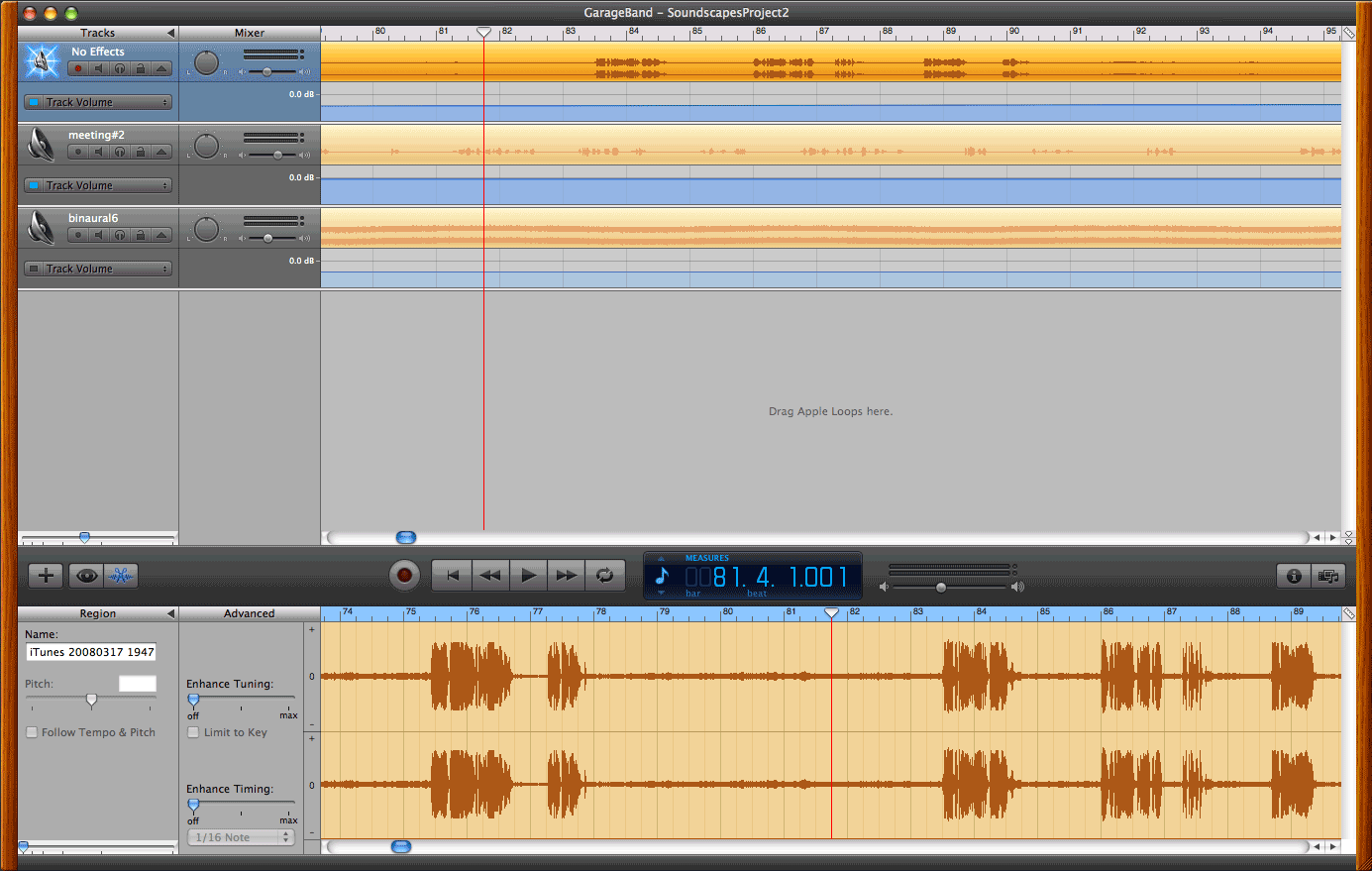Project Two: Tension

Figure 1. An illustration made from doodles taken from the
margins of meeting notes from my government job.
Part I: Theoretical Background
When I worked for the state government, I was struck by how much time was spent dealing with Catch-22-style tensions. Workers were expected to work hard and efficiently, but were often given no deadlines or project parameters. When parameters were defined, they were constrained or altered by bureaucracy. If goals for a project were clear, they would often need input from another group whose goals for the project were not clear. This created tension.
Happy, then, to have a paycheck and be relatively unconstrained by rigorous project plans and deadlines, many workers found outlets for their creativity that had nothing to do with work. They would—and I'm not saying they did this on the clock—write poetry, make jewelry, play musical instruments. I would see guys finger-picking on the tailgate of a truck during a break. But that was a rare performance. More often, I would see only glimpses: guitars tucked under cubicles or jewelry-for-sale fliers thumbtacked on the bulletin boards. I'd see an blurb in The Chronicle about a poetry reading. There was evidence of creativity. But I couldn't see it at the time. Any evidence of creativity was, for me, hidden under red tape. Projects that would take months in the private sector took years and years and years. But when I went back over all those meeting minutes I found little doodles I had made. They seemed crude and insignificant in the margins. But then I thought about the aggregate. I had generated hundreds and hundreds of these over a few years. And that was just me. I love to image the treasure trove of art, tucked away, Dickinson-style, in government office desks drawers amid paper clips and Post-It Notes. And it occurs to me, only now, that even in the most boring place imaginable, there is evidence of creativity. And I wonder: what role does creativity play in managing tension? A full-blown study of non-mission-critical creativity in the workplace is probably outside the scope of this class. But an exploration of sorts is possible.
Happily (though not without anxiety over things like health insurance and mortgage payments), I quit that job and moved to Key West, where I experienced another kind of tension: It is a tourist trap. The very colloquialism conjures up the tension. If tourists choose a vacation destination, how can they be trapped by it? Well, for one thing, on a two-by-four mile island, real-estate is at a premium. Tourists have a totally different perspective on real-estate, since they only need it for a limited time. But when one has to live in a tourist trap, one realizes the very thing that brings people to a place can be the thing that traps them. This thing is variable. But in the case of Key West, the ocean was a likely candidate.
The ocean is beautiful and fun. But it is also—as beautiful and fun things often are—expensive and dangerous. The same clear water where one snorkels next to dolphins and manatees can turn murky and drown a person in a strong current or be whipped into a hurricane. Property near the ocean is crazy-expensive. The ocean is also, militarily speaking, strategic. So there was a base nearby. It's hard to pretend you haven't a care in the world when fighter jets remind you that it's wartime by flying in formation across your view of the sunset. In short, when living in a tourist trap, you might never be sure whether you are at play or being played.

Figure 2. Me in the K-Dub.
These are personal examples. But it's not hard to come up with more public examples of tension. We could look at social issues, for example the way children of divorce shift perspectives between parents. We could refer to classical rhetoric and Plato's concept of dialectic. We could allude to Joseph Heller's Catch-22 or George Orwell's "doublethink" in 1984. Suffice it to say that it seems to be a relatively human thing to simultaneously experience something that seems at phases chaotic and attempt to make sense of it. So, drawing from the experiences above, I focused my second project on dissonance.
I decided to create dissonance by playing a relaxation track simultaneously with another track of boss ranting at his underlings. Then I had listeners in the class record on paper, in whatever format they wanted, their responses. Underlying both tracks was a third binaural track that was designed to mimic a relaxation sequence.
The experience of working in an office is fairly obvious in the selection of fluorescent lights and in the audio (though I hasten to add that I never in my life have worked for someone quite so unpleasant as the one heard in this audio sample). The experience of living on an island is more subtle, but is still present in a few ways. Edited out of the relaxation audiobook is the sound of the ocean that ends the relaxation practice. Also, when I lived in Key West, I lived above two yoga studios. This made the practice of yoga nidra—and other relaxation-based styles of yoga—very convenient. The audiobook from which this track was taken—purchased by me when I worked at the aforementioned office—outlines a practice similar to yoga nidra. Also, A form of breathing called Ujjayi breath, or ocean breath, is practiced in some forms of yoga. So there is something about the ocean that we associate with relaxation, despite its danger and potential for destructiveness. Another aspect of the ocean can be seen in the binaural beats added to the mix. The plug-in, titled "Binaural Tones with surf 2" allows users to control the "surf" frequency. But these are rather superficial connections more associated with the feel of the performance and presentation than suggestive of any formal links.
A movie of the class listening to this track
and illustrating their reactions, followed
by illustrations from the class.
Part II: Process
Track 1. Relaxation. I took an audiobook I purchased through Audible.com about 3 years ago, stripped out the DRM using Audio Hijack Pro, and dropped the sampled part into GrageBand where I adjusted the track volume and edited it for length.
Track 2. Office Rant. I found this track at the The Freesound Project at http://freesound.iua.upf.edu/index.php. The original is a .wav file and is 36:38 long and the filename is themostannoyingmeetingever.wav. The description states "Found this cassette in an alarm clock radio from an old department of a now defunct collection agency. Amazing tirade by a lunatic manager and reactions and abmience [sic] from the office around the conference call." I edited volume and the length of the wave file in GarageBand.
Track 3. Binaural Beat After a bit of research, I found that I could create binaural beats using Audacity and a plug in. I downloaded both programs and found some research on brainwaves to use as guidelines for simulating different brain states using the binaural beat:
BETA waves 13 to 30 Hz the fastest waves, most commonly found during our waking state, associated with outward awareness, engaged mind, arousal, actively perceiving and evaluating forms of data through the senses; also present with fear, anger, worry, hunger, and surprise.
ALPHA waves 7 to 13 Hz associated with non-drowsy but relaxed, tranquil state of consciousness, less engagement and arousal, pleasant inward awareness, body/mind integration, present during meditation and states of relaxation
THETA waves 3 to 7 Hz associated with increased recall, creativity, imagery and visualization , free-flowing thought, future planning, inspiration, drowsiness, present during dreaming and REM states
DELTA waves .1 to 3 Hz associated with deep dreamless sleep, deep trance state pituitary release of growth hormone, self-healing, present during deep levels of non-REM sleep. (From http://www.consciousdreaming.com/lucid-dreaming/brainwave-entrainment-info.htm)
The beat I ended up with went from 20 Hz to 10 Hz to 7 Hz to 10 Hz in six minutes.
Software:
- Firefox: used to find tracks.
- GarageBand: used to edit down all the tracks.
- Audacity: used with the plug in to create the binaural beat.
- Binaural Tones with surf 2 plug-in for Audacity: used to create binaural beat.
- Audio Hijack Pro: used to strip the DRM out of the proprietary audiobook.
- Epson Scan: used to scan in the feedback images.
- Photoshop: used to resize images.
- Keynote: used to order the images and put them in a Quicktime Movie.
- Final Cut Pro: used to edit the feedback images with the video from the class and the audio.
- Quicktime Pro: used to compress the video.
- Fugu: used to upload.
- TacoEdit: used to edit XHMLT and CSS.
Other materials:
- Lighting: fluorescent work lights with 2 three-prong-to-two-prong adapters (available at Target) an extension cord with a foot switch (available at Target).
- Pastel cardstock paper.
- Markers and colored pencils.

